How to Fertilize Pumpkins Effectively: Expert Tips for a Bountiful Season
- May 6, 2024
- 0 comment
Discover how to fertilize pumpkins effectively with our expert tips for a bountiful harvest. Get the best growth results. Are you dreaming of a pumpkin patch filled with vibrant, healthy pumpkins? Whether you’re a seasoned gardener or a beginner, understanding the right fertilization techniques can make all the difference.

We’ll walk you through the essential steps to nourish your pumpkins from planting to harvest. Discover the secrets to maximizing growth and ensuring a bountiful pumpkin season right here!
Table of Contents
- Understanding Pumpkin Nutrition Needs
- Choosing the Right Fertilizer
- Plant Spacing and Layout for Optimal Growth
- Pruning Techniques for Pumpkin Plants
- Timing and Application Techniques
- Watering Practices for Optimal Fertilizer Uptake
- Monitoring Pumpkin Growth and Adjusting Fertilization
- Common Mistakes in Fertilizing Pumpkins
- Additional Tips for a Bountiful Harvest
- Recognizing Harvest Time
- Conclusion
- FAQs
Understanding Pumpkin Nutrition Needs
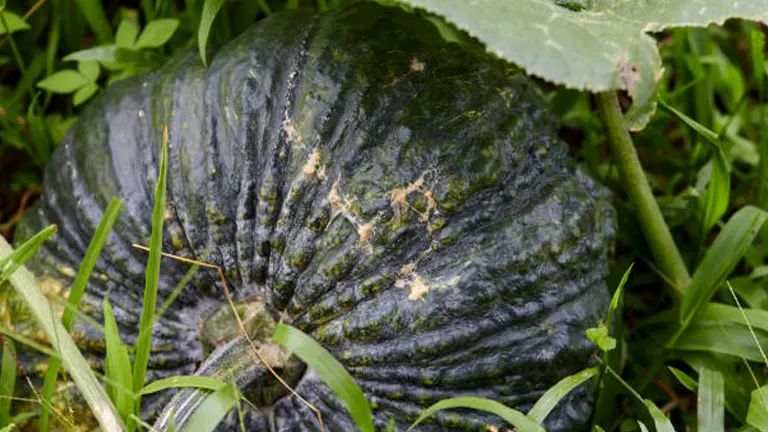
Pumpkins are not only popular for their seasonal appeal but also for their demanding nutrient requirements. To develop fully, pumpkins require a well-balanced diet primarily composed of three essential nutrients: Nitrogen (N), Phosphorus (P), and Potassium (K). Each of these plays a critical role at different stages of the pumpkin’s growth cycle.
- Nitrogen (N) is crucial for the initial growth phase of pumpkins, promoting vigorous leaf and stem development. It supports the formation of chlorophyll, which is necessary for photosynthesis, the process by which plants convert light energy into chemical energy. Typically, a pumpkin plant will thrive when nitrogen levels in the soil are between 20 to 40 mg/kg, ensuring optimal vegetative growth.
- Phosphorus (P) enhances root development and is vital for the flowering and fruiting stages. It facilitates the transformation of solar energy into chemical energy via ATP, helping plants metabolize and utilize nutrients. Adequate phosphorus is also linked to improved fruit quality and increased pumpkin yields. Ideal soil phosphorus levels for pumpkins are around 30 to 50 mg/kg.
- Potassium (K) plays a multifaceted role by enhancing disease resistance, aiding in water regulation, and supporting the synthesis of proteins and starches. Potassium helps strengthen the cellular walls of the pumpkin, contributing to the structural integrity and storability of the fruit. The optimal potassium concentration for pumpkin plants is typically between 100 to 200 mg/kg.
Analyzing Your Soil
Understanding the soil’s nutrient content and pH is essential before beginning your fertilization regime. A comprehensive soil test will not only reveal these levels but also guide you in adjusting your fertilization strategy effectively.
- Collecting Soil Samples: To obtain a representative sample, collect soil from multiple locations within your garden plot. Use a soil auger or shovel to reach a depth of 6-8 inches, which is the active root zone for most pumpkin plants.
- Understanding Results: Soil tests generally measure macronutrients and micronutrients along with pH, which influences nutrient solubility and availability. For pumpkins, optimal soil pH ranges from slightly acidic to neutral (pH 6.0-7.0). This range maximizes the availability of key nutrients.
Here is a table illustrating the ideal soil nutrient levels and pH for growing pumpkins:
| Nutrient | Ideal Concentration (mg/kg) | Role in Pumpkin Growth |
|---|---|---|
| Nitrogen | 20 – 40 | Supports leaf and stem growth |
| Phosphorus | 30 – 50 | Essential for root development and fruiting |
| Potassium | 100 – 200 | Enhances plant health and fruit quality |
Choosing the Right Fertilizer

Selecting the ideal fertilizer for pumpkins is a nuanced decision that should be guided by comprehensive soil test results and the specific nutritional needs of your plants throughout their growth cycle.
Selecting the ideal fertilizer for pumpkins is a nuanced decision that should be guided by comprehensive soil test results and the specific nutritional needs of your plants throughout their growth cycle.
Types of Fertilizers
- Organic Fertilizers: These are derived from natural sources such as animal manure, compost, bone meal, and cottonseed meal. Organic fertilizers not only supply essential nutrients but also enhance soil organic matter, which improves soil structure, moisture retention, and microbial activity. These fertilizers release nutrients gradually, reducing the risk of nutrient leaching and overfeeding. For pumpkins, which are heavy feeders, organic fertilizers can provide a steady supply of nutrients over an extended period.
- Synthetic Fertilizers: These are manufactured chemically and are designed to provide a quick release of nutrients. Common formulations include granular and liquid types. Synthetic fertilizers can be very effective in giving pumpkins a rapid boost, especially during critical growth phases such as flowering and fruit development. However, they must be used judiciously to prevent potential issues like root burn or environmental runoff.
Choosing Based on Soil Test Results
The choice between organic and synthetic fertilizers and the appropriate N-P-K ratio should be based on the specific deficiencies highlighted by your soil test. For example:
- If the test shows a nitrogen deficiency, a higher nitrogen formula might be necessary during the vegetative growth phase.
- In cases where phosphorus is low, a starter fertilizer high in phosphorus is recommended at the planting stage to stimulate root development.
Fertilizer Application Strategy
To optimize growth and yield, the fertilizer application should be tailored to the plant’s growth stages:
- Initial Growth: Apply a balanced 10-10-10 N-P-K fertilizer at planting to establish a strong foundation.
- Flowering Stage: Switch to a lower nitrogen and higher phosphorus and potassium formula (e.g., 5-15-15) to support flowering and fruiting.
Product Recommendations and Nutrient Ratios
Here is a table that provides guidance on fertilizer types and their typical nutrient ratios, adjusted for different stages of pumpkin growth:
| Fertilizer Type | N-P-K Ratio | Recommended Usage | Benefits |
|---|---|---|---|
| Organic | 5-10-10 | Early growth phase | Slow release, improves soil health |
| Synthetic | 10-10-10 | Planting and early vegetative growth | Quick nutrient availability |
| Synthetic | 5-15-15 | Flowering and fruiting stages | Supports bloom and fruit development |
Plant Spacing and Layout for Optimal Growth
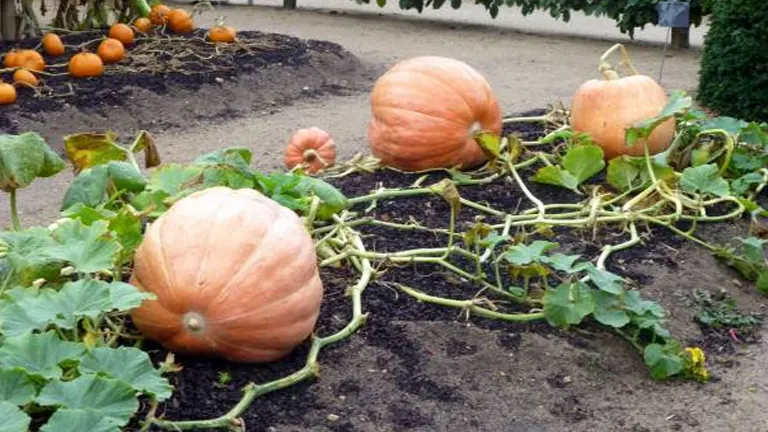
The strategic arrangement of pumpkin plants is crucial for maximizing yield and maintaining plant health. Proper spacing ensures that each plant receives adequate resources such as sunlight, air, and nutrients, which are essential for optimal growth and development.
Factors Influencing Plant Spacing
- Sunlight Penetration: Pumpkins require full sun. Proper spacing ensures that each plant gets enough light, which is crucial for photosynthesis and overall energy production.
- Air Circulation: Adequate space between plants promotes better air circulation, reducing the moisture on plant surfaces and significantly lowering the risk of fungal infections.
- Root Expansion: Pumpkins have extensive root systems. Sufficient space allows roots to expand freely without competing for nutrients and water, leading to stronger, healthier plants.
- Maintenance Access: Proper spacing allows easier access for garden maintenance activities such as weeding, pruning, and harvesting, ensuring that plants remain healthy throughout the season.
Spacing Guidelines
The optimal spacing for pumpkins varies depending on the variety and the intensity of the farming operation:
- Small-Scale Gardens: Aim for a spacing of about 5-6 feet between plants. This allows backyard gardeners to manage plants easily and ensures each pumpkin has room to grow.
- Medium-Density Farms: In a more commercial setup, spacing plants 8-10 feet apart with rows 10-12 feet apart can optimize the use of space while still providing ample air and light.
- High-Density Orchards: For intensive farming operations, implementing vertical farming techniques like trellising can be effective. This method not only saves ground space but also elevates the fruits, reducing their susceptibility to soil-borne diseases.
Benefits of Optimal Spacing
Implementing the right spacing strategy offers multiple advantages:
- Enhanced Disease Resistance: Proper spacing reduces the risk of disease spread between plants by minimizing leaf dampness and lowering humidity around the foliage.
- Improved Nutrient Uptake: With less competition for nutrients, each plant can better absorb the necessary minerals from the soil, leading to vigorous growth.
- Higher Quality Fruit: Adequate space reduces physical stress on plants, which can contribute to producing larger, healthier fruits with better shelf life.
Spacing and Layout Table
Here is a detailed table showing recommended spacing for different types of pumpkin growing setups:
| Farming Scale | Pumpkin Type | Plant Spacing (ft) | Row Spacing (ft) | Benefits of Spacing |
|---|---|---|---|---|
| Small-Scale | Bush/Semi-Bush | 5 – 6 | 6 – 8 | Sufficient room for vines to spread |
| Medium-Density | Vining | 8 – 10 | 10 – 12 | Minimizes disease, maintains airflow |
| High-Density | All Types | 4 – 5 | 8 – 10 | Efficient use of space, trellising |
Pruning Techniques for Pumpkin Plants
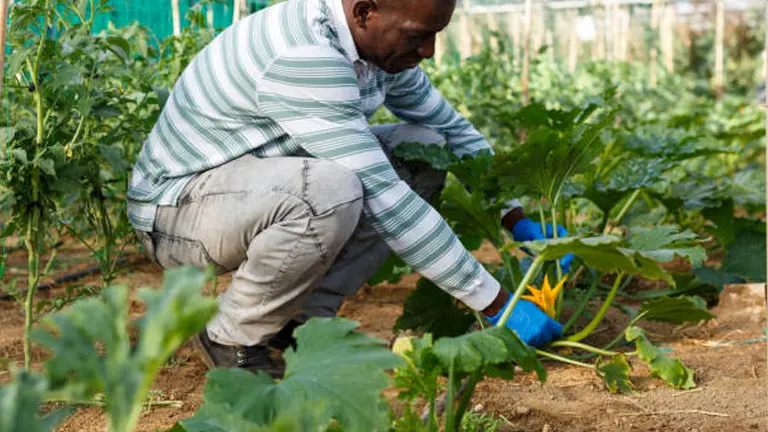
Pruning is a crucial cultivation practice for pumpkin plants, enabling gardeners to manage the plants’ growth efficiently while maximizing fruit size and quality. Effective pruning not only controls plant sprawl but also directs the plant’s energy toward producing larger, healthier fruits.
When to Prune
Pruning should begin when the pumpkin plant has established a robust system of vines, usually about 4 to 6 weeks after planting. This timing ensures that the plant is strong enough to recover quickly and continue healthy growth.
Selective Vine and Bud Management
- Main Vine Selection: Identify the main vine, which is typically the thickest and longest, as your plant’s primary growth driver. Supporting this vine enhances the plant’s overall strength and fruit production capacity.
- Secondary Vines: Choose 2 to 3 healthy secondary vines to keep. These should be evenly spaced around the main vine to avoid overcrowding and to ensure balanced growth and nutrient distribution.
- Pruning Excess Vines: Cut back additional vines to the base to prevent them from sapping energy from the main and selected secondary vines. This helps concentrate the plant’s resources on fruit development rather than vegetative growth.
Leaf and Bud Pruning
- Leaf Management: Regularly inspect the leaves and remove any that show signs of disease or damage to prevent the spread of pathogens. Additionally, thin out healthy leaves that overly shade fruits, which can improve air circulation and sunlight exposure, essential for fruit development and disease prevention.
- Bud Thinning: If the plant is overly productive, thinning some of the buds can prevent overburdening the plant. By selectively removing smaller or poorly positioned buds, you can enhance the size and quality of the remaining pumpkins.
Benefits of Proper Pruning
Pruning has multiple benefits that contribute to a successful pumpkin harvest:
- Improved Airflow and Light Penetration: Adequate space between leaves and vines reduces the risk of fungal diseases and allows more sunlight to reach the fruits, crucial for their growth.
- Energy Efficiency: By limiting the number of vines and fruits, the plant can allocate more nutrients and energy to developing fewer, but larger and healthier pumpkins.
- Ease of Maintenance: Pruned plants are generally easier to inspect and manage, making it simpler to apply treatments, fertilizers, and to harvest the pumpkins.
Best Practices for Pruning
- Use Clean Tools: Always use sterilized pruning shears to make clean cuts and prevent the introduction of diseases.
- Prune Regularly: Check plants weekly and prune as necessary to maintain ideal plant structure and health.
Timing and Application Techniques
The effectiveness of your fertilization strategy is greatly influenced by the timing and method of application. Begin by incorporating a balanced fertilizer into the soil a few weeks before planting to enrich the soil. At planting time, applying a phosphorus-rich starter solution can kickstart root development, which is vital for young pumpkins. As the growing season progresses, a mid-season application of a potassium-rich formula supports robust fruit development.
Fertilizers can be applied in various ways to ensure even coverage and optimal nutrient absorption:
- Broadcasting: This method involves spreading granular fertilizer evenly over the soil surface and is particularly effective before planting.
- Side-dressing: Applying fertilizer alongside the rows or around individual plants can be done as plants grow to provide a continuous nutrient supply, especially important during the peak growing phases.
Watering Practices for Optimal Fertilizer Uptake
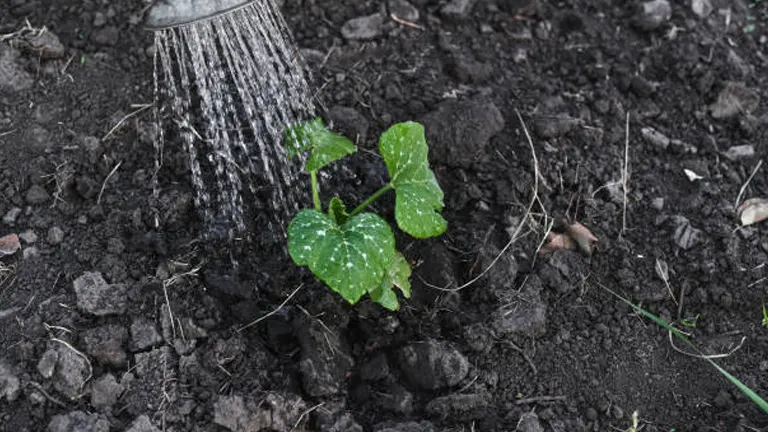
Effective watering practices are integral to ensuring that fertilizers are absorbed properly by pumpkin plants. Pumpkins require a consistent amount of moisture, especially when fruits are forming and growing. Over or under-watering can not only stress the plants but also affect nutrient uptake adversely.
Ideal Watering Techniques
Watering should be done deeply and infrequently to encourage the roots to grow deeper into the soil, which helps them access nutrients more effectively. Aim to keep the soil moist but not waterlogged. Using a drip irrigation system can be an efficient way to manage water delivery directly to the roots without saturating the foliage, which helps prevent leaf diseases.
Timing your watering early in the day allows the foliage to dry before evening, further reducing the risk of fungal infections. During hot, dry periods, increasing the frequency of watering ensures that the plants remain hydrated and healthy, optimizing their ability to absorb the nutrients provided by fertilizers.
Monitoring Pumpkin Growth and Adjusting Fertilization
Regular monitoring of your pumpkin plants is crucial to adapt your fertilization strategy based on their growth and health. Observing the plant’s general appearance, leaf color, and fruit development can provide valuable clues about their nutritional status.
Signs of Nutrient Imbalance
- Nitrogen Deficiency: Yellowing of older leaves and stunted growth.
- Phosphorus Deficiency: Darker than normal leaves or reddish-purple coloring.
- Potassium Deficiency: Leaf edges turning brown and crispy.
If signs of deficiency appear, adjusting your fertilizer application might be necessary to address these imbalances. Conversely, symptoms such as excessively lush foliage with few fruits or salt buildup in the soil may indicate over-fertilization.
Adjusting Fertilization Practices
If the plants are not responding well to the current fertilization regimen, consider conducting another soil test to re-evaluate the nutrient levels. Based on the results, you might need to increase or decrease the concentration of specific nutrients or change the timing of fertilizer applications to better suit the plant’s needs.
Common Mistakes in Fertilizing Pumpkins
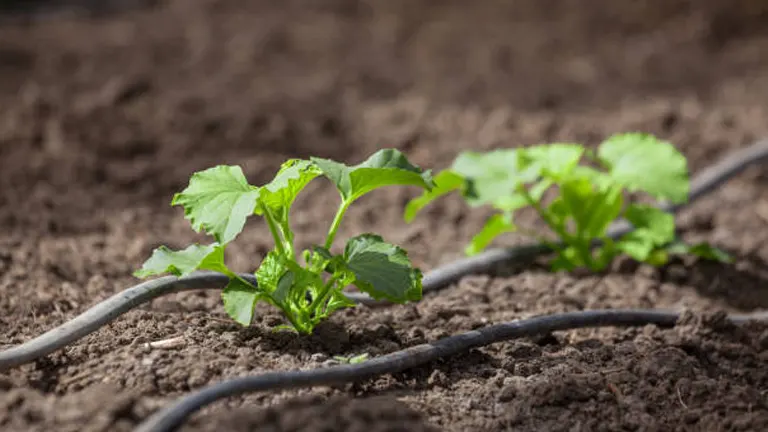
Fertilizing pumpkins is a balancing act that requires careful attention to avoid common pitfalls. Over-fertilization can lead to lush, vegetative growth at the expense of fruit production. Excessive use of nitrogen, for instance, can push the plant to develop more leaves and vines, reducing the energy directed towards fruiting.
Conversely, under-fertilization can result in poor growth and small fruits. It’s important to follow recommended dosage and application frequency to ensure plants receive the right amount of nutrients.
Best Practices to Avoid Mistakes
- Always base your fertilization strategy on a detailed soil test.
- Use a calibrated spreader for granular fertilizers to ensure even distribution.
- Adjust your fertilization plan based on the growth stage of the plant and observed conditions.
Additional Tips for a Bountiful Harvest
Beyond fertilization, several complementary practices contribute significantly to the health and yield of pumpkin plants. These techniques ensure that your efforts in fertilizing are supported by overall good plant care.
Complementary Cultivation Practices
- Mulching: Applying a layer of organic mulch around your pumpkin plants helps retain soil moisture, suppresses weeds, and keeps soil temperatures stable. Materials such as straw or shredded leaves are ideal as they also gradually decompose and enrich the soil.
- Weeding: Regular weeding is crucial as weeds compete with pumpkin plants for nutrients and water. Keeping the bed clear not only improves nutrient availability but also reduces pest and disease risks.
- Pest and Disease Control: Monitor plants regularly for signs of pests and diseases. Early detection and treatment can prevent minor issues from becoming major problems. Use organic pesticides and fungicides to maintain a healthy, chemical-free garden environment.
Recognizing Harvest Time

Knowing when to harvest pumpkins is essential for achieving the best quality and storage potential. Pumpkins are ready to be harvested when they have reached their expected size, the rind is hard, and the color is uniformly deep. The stem should also start to harden and dry. Harvesting too early or too late can affect both the taste and shelf life of the pumpkins.
Related Post
- How to Fertilize Bougainvillea: A Complete Guide for Stunning Blooms
- How to Fertilize Apple Trees: Essential Tips for a Bountiful Harvest
- How to Fertilize Lemon Trees: Secrets for Thriving Citrus
- How to Fertilize Avocado Tree: A Step-by-Step Guide for Lush Growth
Conclusion
Growing pumpkins successfully requires more than just planting seeds and watching them grow; it involves a dedicated approach to understanding and meeting the plants’ needs throughout their lifecycle. From preparing the soil with the right nutrients to implementing proper watering and pest management strategies, each step is vital. By following the guidelines outlined in this article, gardeners can ensure that their pumpkin plants thrive and produce a plentiful harvest.
FAQs
- What is the best type of fertilizer for young pumpkin plants?
Young pumpkin plants benefit most from a balanced fertilizer that has equal parts of Nitrogen, Phosphorus, and Potassium (such as a 10-10-10 mix). This helps in establishing a strong root system and healthy foliage during the early growth stages. - How often should I apply fertilizer to my pumpkin plants during the growing season?
Fertilizer should be applied at key stages: initially at planting, again when the vines begin to run, and during the flowering stage. Each application should be spaced about 4-6 weeks apart, depending on the growth rate and soil fertility. - Can over-fertilizing harm my pumpkin plants?
Yes, over-fertilizing can lead to excessive leaf growth at the expense of fruit development. It can also cause nutrient burn, where the roots suffer damage due to high levels of fertilizer, leading to wilted or brown leaves. - What signs indicate that my pumpkin plants are under-fertilized?
Under-fertilized pumpkin plants typically show slow growth, light green or yellow leaves, and reduced fruit size or quantity. If these symptoms appear, a soil test can confirm nutrient deficiencies, guiding additional fertilization. - Is there an organic alternative to synthetic fertilizers for pumpkins?
Absolutely! Composted manure, bone meal for phosphorus, and wood ash for potassium are great organic alternatives. These provide nutrients more slowly, which can be beneficial for maintaining a steady growth without the risk of nutrient burn. - How does the pH of the soil affect fertilizer effectiveness in pumpkin growing?
Pumpkins prefer slightly acidic to neutral soil (pH 6.0-7.0). If the soil is too acidic or too alkaline, it can lock out essential nutrients, making them unavailable to the plants. Adjusting the pH with lime (for acidic soil) or sulfur (for alkaline soil) can help optimize nutrient uptake. - Should the method of fertilizer application change as the pumpkin plants grow?
Yes, initially, a broadcast method is suitable for incorporating fertilizers into the soil. As plants grow, side-dressing by applying fertilizer along the sides of pumpkin rows can provide nutrients directly to the developing roots without overwhelming young plants. - What role does water play in the fertilization of pumpkin plants?
Watering plays a critical role in fertilizer absorption. Consistent, deep watering helps dissolve the fertilizer and carry its nutrients to the roots. However, over-watering can lead to leaching where nutrients are washed away from the root zone before plants can absorb them, while under-watering can lead to poor nutrient uptake.
With these expert tips on how to effectively fertilize pumpkins, you’re well on your way to nurturing a thriving pumpkin patch. Remember, the key to a bountiful season lies in understanding and applying the right nutrients at the right times. Happy gardening!
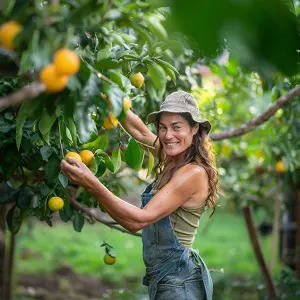
Emma Hudson
Forestry AuthorEmma's experience in farming shapes her detailed guides on gardening and farming tools, providing practical, actionable advice grounded in real-world experience. Her work targets both newcomers and experienced farmers, aiming to enhance their practices with a mix of traditional wisdom and modern techniques. By making complex agricultural concepts accessible, Emma's guides serve as valuable tools for those navigating the challenges of contemporary farming, offering strategies for sustainable success.



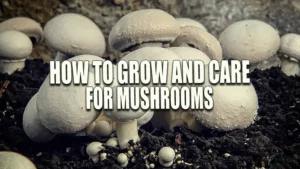


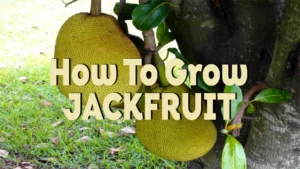





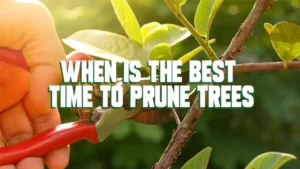
Leave your comment